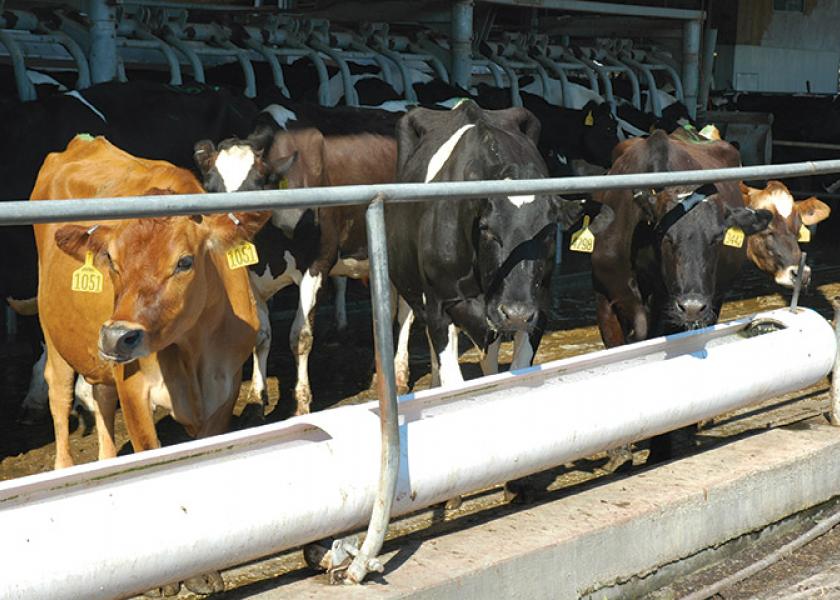Tired of Losing

The Southeast Quality Milk Initiative levels the playing field
In the past few decades, the Southeast has seen an exodus of dairy production due to many factors, such as less access to quality feed, lower milk yields and high somatic cell counts (SCC). According to USDA statistics, nearly 6,000 dairies left from 1995 to 2010, resulting in a 64% decline in the number of dairy farms.
"We’ve lost a significant number of herds and significant number of cows," says Stephen Oliver, professor of animal science at the University of Tennessee (UT). "Quite frankly, it is to the point where we need to be proactive and do something or we won’t have a dairy industry in this part of the world,"
Being proactive is just what Oliver and UT did nearly 10 years ago by starting a program called the Tennessee Quality Milk Initiative. The program sought to improve milk quality in the state, which would increase profitability for farmers and hopefully keep them in the industry.
"It was really apparent back then that milk quality in Tennessee and in the Southeast paled in comparison to the rest of the country," Oliver says. "We were trying to be proactive and come up with an educational agenda to try and help the producers with some of the issues they were dealing with."
Bonus Content | |
| More on mastitis protocols |
The university worked closely with the Tennessee Department of Agriculture to provide incentives for producers to participate in educational modules. Oliver says the program was a success with approximately 55% of Tennessee dairy producers taking part, but he had a bigger vision.
"My dream was to grow the quality milk initiative beyond the borders of Tennessee," he says.
The reason: Milk quality in the Southeast is consistently the poorest of all the regions of the U.S. According to Dairy Herd Improvement Association (DHIA), SCC averages were 33% higher in the Southeast in 2010 than the national average.
Oliver and several colleagues from other state institutes wondered if there might be a chance to put together a similar kind of program for the entire Southeast.
"Low and behold, an opportunity presented itself through USDA, so we mobilized forces pretty quickly and put together the Southeast Quality Milk Initiative proposal," Oliver says.
The five-year project started in February 2013 and is funded by a $3 million grant. This integrated grant proposal combines applied research with demonstrations and outreach for farmers. There will also be undergraduate curriculum developed with the project.
The Southeast Quality Milk Initiative directly involves UT, University of Kentucky, University of Georgia, University of Florida, Virginia Tech University and Mississippi State University. The states of South Carolina and North Carolina are also participating in the project by administering surveys to local dairies.
Christina Petersson-Wolfe, associate professor in dairy science at Virginia Tech, is leading the portion of the project that is in her state.
"Right now we’re getting the team ready to conduct on-farm assessments. There will be a total of 306 administered in the entire Southeast, 96 of which will come from the state of Virginia," Petersson-Wolfe says.
Kentucky and Tennessee will also be performing the same number of assessments as Virginia, while Mississippi will do the remaining amount. The on-farm assessment is observational and will analyze parameters like milk quality, milking equipment function and cleanliness.
Meetings with producers will also be setup on-farm to gather information in more of an interview setting.
The on-farm portion of the project is the second objective after an 2013 initial survey and focus group process to help determine the sociological aspects of milk quality.
"It is very extensive as far as trying to figure out how dairy farmers make decisions," Oliver says. "It was important because it will identify the dairies we’ll be working with in the current year."
Each year there is an advisory board meeting held at one of the participating institutes to provide updates and more information. The board consists of dairy producers and industry professionals. For 2014, a two-day seminar will be offered that invites producers, Extension personnel, industry professionals and veterinarians to participate in a short course setting where they can enhance their knowledge on milk quality. Virginia Tech will be hosting the meeting on Sept. 22 to 24, 2014.
"We’re hoping to have around 150 participants to offer them some hands-on training in terms of giving them the tools that they can take back to the farm to improve milk quality," Petersson-Wolfe says.
Heat and humidity are some of the reasons for the Southeast’s lack of milk quality and production compared to the rest of the U.S. However, it doesn’t explain why there are such big differences between states in the region. DHIA reports indicate that from 2001 to 2010, Tennessee’s SCC averaged 434,000 cells/ml compared to 320,000 for Virginia. Both states have similar weather.
"It is something we have talked about as a group. We have a lot of our own ideas but we don’t have research evidence to support them at this point," Petersson-Wolfe explains. "We’re hoping to gain that from this study and use it as a learning opportunity for all of the states in the Southeast."
Once the data and information are gathered it should point the Southeast’s dairy industry toward a more stable outlook. "We want to make farms more profitable and sustainable, so they can be more competitive nationally and internationally. We want to see dairy in the Southeast survive," Petersson-Wolfe adds.







